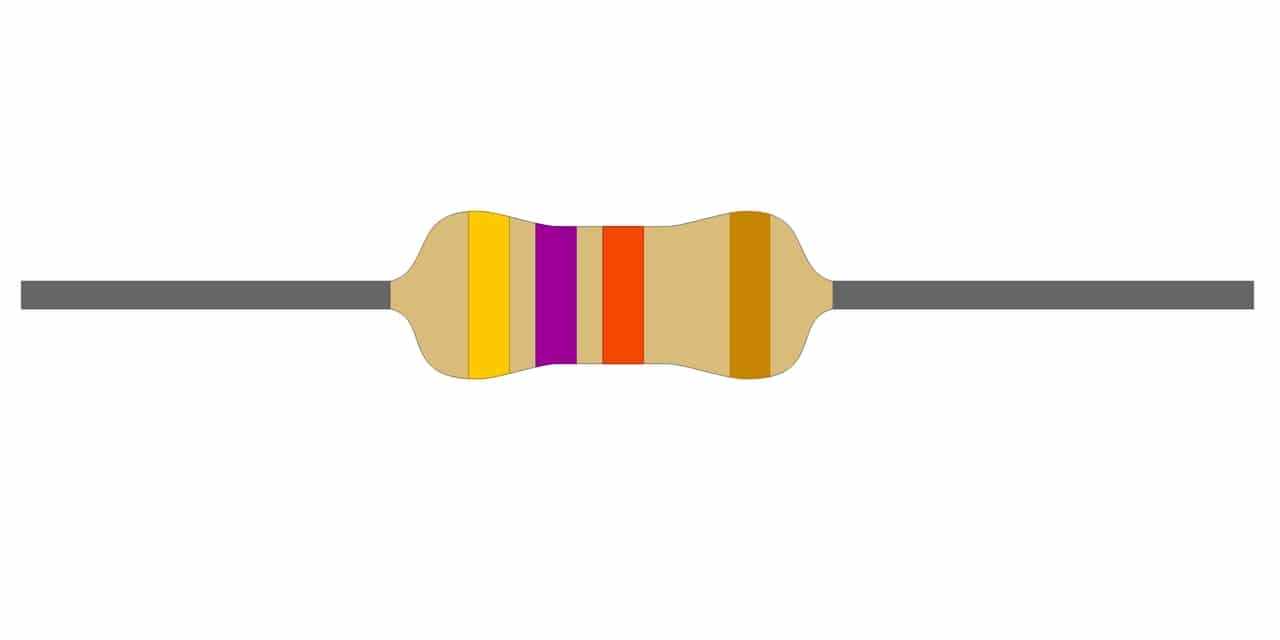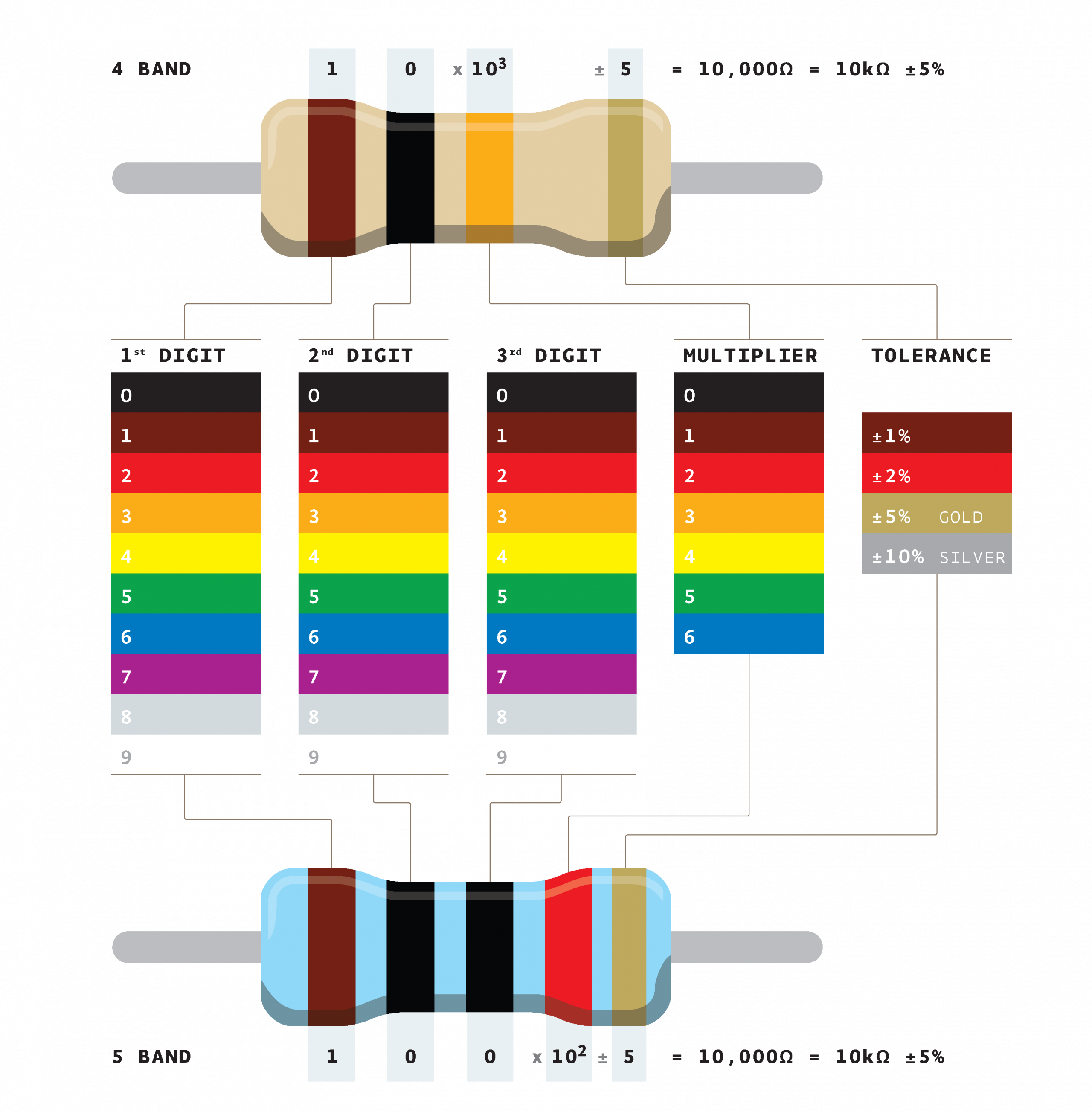
Muchos Electronic components they have nomenclatures or systems to identify them. For example, resistor color codes, which will determine the resistance in ohms that they are capable of developing, as well as the tolerance. It is important to know these codes to know about the type of resistance you have in front of you when you do not have any other help to know its value, such as a multimeter.
In this quick guide you can learn to crack the codes of the resistors to obtain the value in ohms and their tolerance, both in conventional resistors and in other types of resistors ...
Resistor color codes
Depending on the type of resistance, color codes may vary. To be able to decipher the values in ohms and tolerances you have to know these tables of color codes of the resistors.
4 and 5 bands
For conventional resistors of 4 and 5 bands, you can make use of this table to decipher its value:
As you can see, both above and below you have an example of calculation so that you can see the operation of this type of tables. For example, a 5-band resistor with colors brown, black, black, red, and gold, would mean you have 10 kΩ and a tolerance of ±5%, that is, it could vary that value above or below 5%, since they are not exact.
Therefore, the procedure it is simple, just identify that it is 4 or 5 colors, and then go looking at each color in order in the table. In this example it would be:
- Brown: the brown in the first strip means 1. It will be the first digit of the number to be multiplied by the multiplier.
- Black: the black in the second strip is 0. It is the second digit.
- Black: the black in the third strip is 0. Third digit.
- RED: the red in the fourth strip is a multiplier, which will be 10 raised to the digit corresponding to that color. In this case x 102.
- Gold: is the tolerance of ±5%.
Therefore, 100 x 102 = 10.000, that is, 10k.
Other resistors
As you can see, the color codes of the resistors for 4 and 5 stripes will not be valid for other resistors. For example, for surface mount, potentiometers (variables), etc.
Ressources
In addition to being able to have the previous tables of color codes of the resistors, you should know that there are Another resources at your disposal to be able to consult them comfortably from wherever you are. For example, you have at your fingertips certain web pages for calculation or some apps for mobile devices:
- Digikey: web with calculator of values according to the resistance code. By the way, if you look for this name on Google Play or the App Store, you will see that it also has an app to use it more comfortably.
- ElectroDoc: Android app with the color codes of the resistors and a multitude of other information about formulas, calculations, circuits, components, etc.
- Resistor Color Code Calculator: an easy-to-use app for calculating resistor values by their colors.
